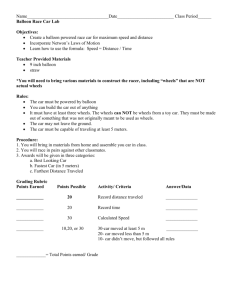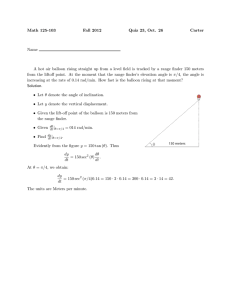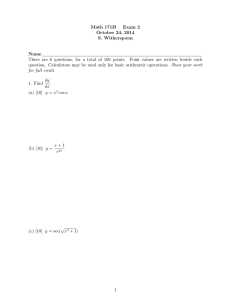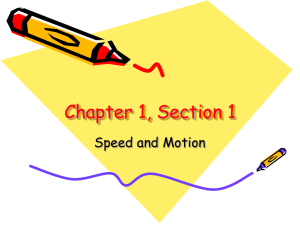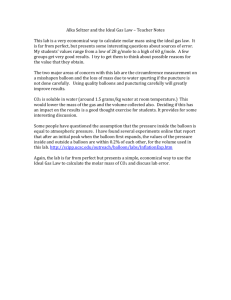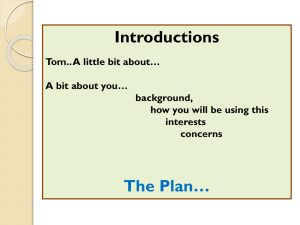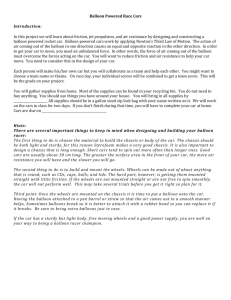Important Guidelines and Information
advertisement
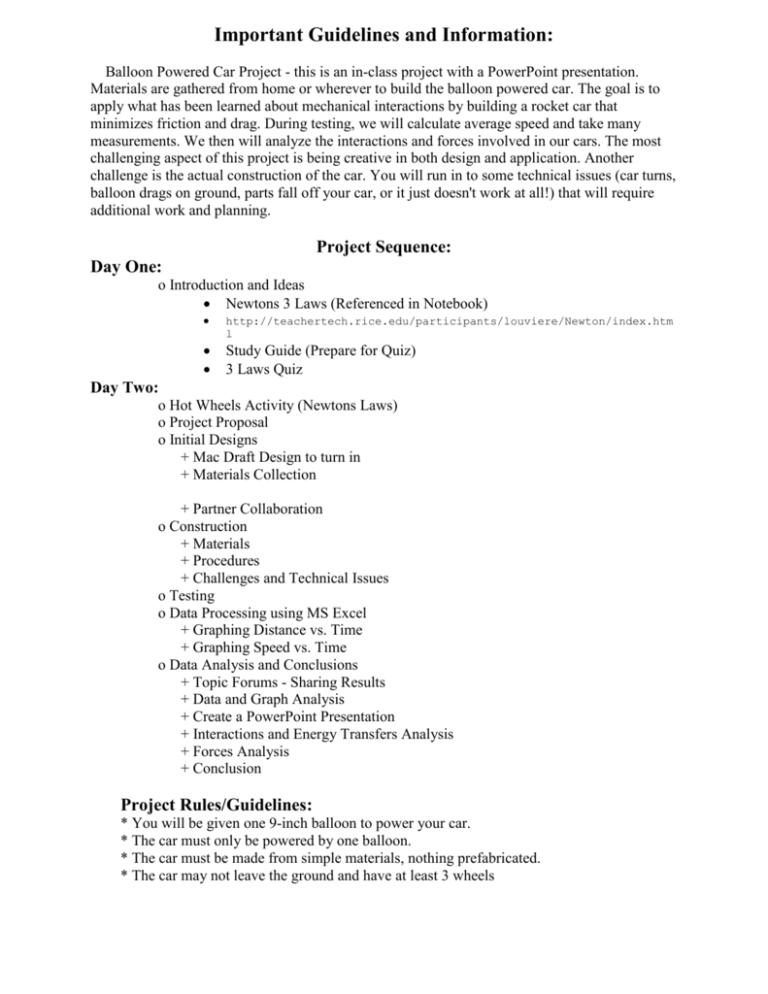
Important Guidelines and Information: Balloon Powered Car Project - this is an in-class project with a PowerPoint presentation. Materials are gathered from home or wherever to build the balloon powered car. The goal is to apply what has been learned about mechanical interactions by building a rocket car that minimizes friction and drag. During testing, we will calculate average speed and take many measurements. We then will analyze the interactions and forces involved in our cars. The most challenging aspect of this project is being creative in both design and application. Another challenge is the actual construction of the car. You will run in to some technical issues (car turns, balloon drags on ground, parts fall off your car, or it just doesn't work at all!) that will require additional work and planning. Project Sequence: Day One: o Introduction and Ideas Newtons 3 Laws (Referenced in Notebook) http://teachertech.rice.edu/participants/louviere/Newton/index.htm l Study Guide (Prepare for Quiz) 3 Laws Quiz Day Two: o Hot Wheels Activity (Newtons Laws) o Project Proposal o Initial Designs + Mac Draft Design to turn in + Materials Collection + Partner Collaboration o Construction + Materials + Procedures + Challenges and Technical Issues o Testing o Data Processing using MS Excel + Graphing Distance vs. Time + Graphing Speed vs. Time o Data Analysis and Conclusions + Topic Forums - Sharing Results + Data and Graph Analysis + Create a PowerPoint Presentation + Interactions and Energy Transfers Analysis + Forces Analysis + Conclusion Project Rules/Guidelines: * You will be given one 9-inch balloon to power your car. * The car must only be powered by one balloon. * The car must be made from simple materials, nothing prefabricated. * The car may not leave the ground and have at least 3 wheels Car Testing: * Pre-measure a distance of 5 meters. * One car will race at a time. One team member prepares the car at the starting line. * Cars take off at "Go!" Timers start. * Time will be taken twice at 1m, 2m, 3m, 4m, 5m, and at car stop (total run time). * Cars continue pass the finish line until they stop. * Measure total distance traveled. * Each car will be allowed three trial runs only if necessary. This allows a second or third chance if the car turns, balloon pinches, etc. If the car makes a successful run, we will only use this data. * Grading for car performance: less than 1 meter: 0 points, 1 meter: 10 points, 2 meters: 20 points, 3 meters: 30 points, 4 meters: 40 points, 5 meters or more: 50 points.

